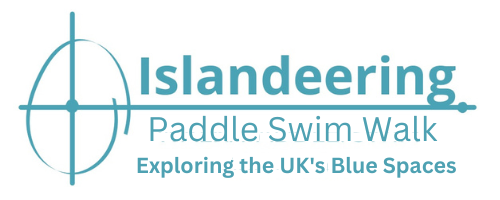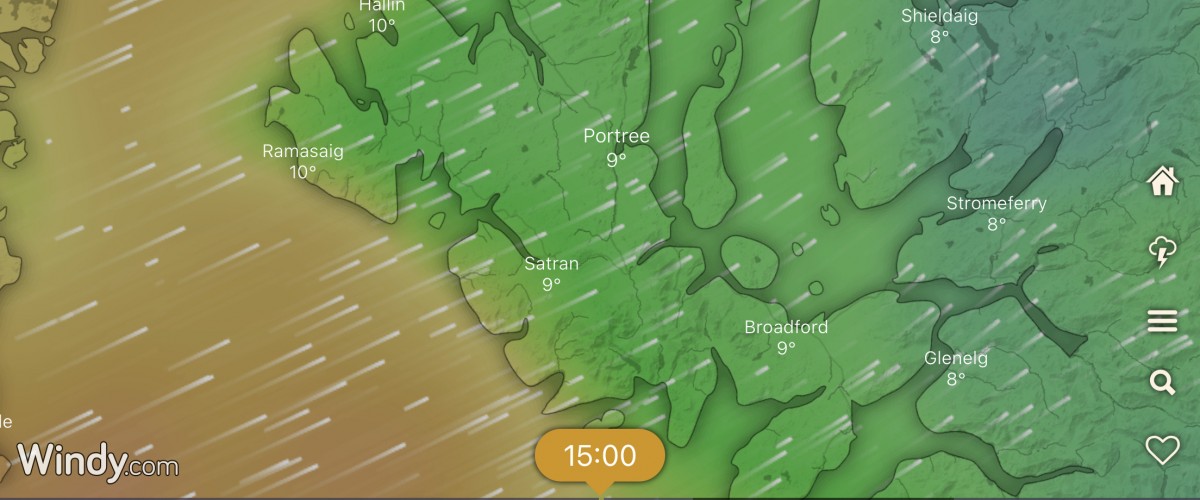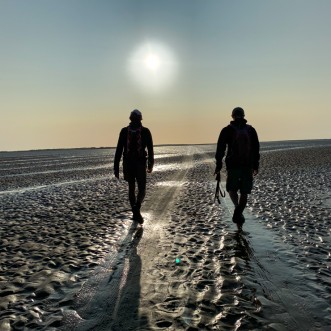Wind is generally the top issue for paddlers to consider when planning a trip. Here are our top tips to consider when planning a trip:
- Use apps such as Windy to understand direction and strength. This app provides a visualisation of the wind and colour codes its strength. Paddlers need to choose days and times when the wind is coloured blue. Other useful apps are the Met Office and Magicseaweed that forecast wind strength and direction over time
- The forecasted wind direction is given as the direction the wind is coming from (not the direction it is heading to). So a westerly wind, for example, is coming from the west.
- Wind speed and direction at your paddling location may be different from a forecast due to natural features such as headlands, valleys and tall buildings so it’s always recommended to spend time to watch and assess the weather before you set off.
- Wind direction can change over 180 degrees during longer paddling trips so you might often hear the term “veering” and “backing”. The term veering is used when the wind direction turns clockwise from its current position, so a southerly wind turns to a westerly wind and might end up as a northerly many hours later. The term backing is used when wind turns anticlockwise, say from an Easterly to a Northerly. Therefore it’s important to check changes in wind direction and speed over the length of your paddle not just at the start.
- Paddling into a headwind, which is wind into your face, will significantly slow your progress. Paddling in a crosswind will affect your ability to paddle in a straight line and challenge your balance. One way to overcome such winds is to kneel down and paddle with hands closer together towards the blade of the paddle. In more extreme circumstances lie on the board and use the arms to paddle, much like surfers do to reach a break, to return to shelter and safety if the wind has picked up whilst on the water. The best wind for paddlers is a tailwind, or wind on your back when you are paddling in your desired direction of travel
- Wind speed up to 10 knots, or Beaufort scale 3, is classified as a gentle breeze and is probably the maximum a beginner wants to paddle in
- Valleys and estuaries often funnel wind up or down them. Even if the wind is forecast for one direction you may find that locally its doing something completely different. Always check local conditions on the day with local paddle schools or RNLI lifeguard station
- On the coast offshore winds are the most serious for safety. They blow off the land to the ocean and are the cause of most paddle board RNLI rescues. Tall buildings and cliffs can offer shelter from offshore winds, but the winds can strengthen as you paddle further away from them.
- Clues for wind conditions can be gleaned from watching the surface of the water before you set off. If its calm in the bay but there are ripples 100m beyond and choppier even further out, this indicates that there might be an offshore wind that’s hitting the water further into the bay.
- Wind over tide is when the direction of the wind is opposite to the flow direction of the water. This creates chop and is not good for the paddler. In this instance if you are paddling with a tailwind the water often looks flat in your direction of travel as you are surfing over the wave crests. This changes when you turn around and paddle into the wind, as you are paddling into the wave crests which is wetter and choppier. Wind with tide, when wind and tie flow is in the same direction, has the opposite effect and can dampen down waves so is desirable when planning any estuary or coastal trip
- Wind chop can also happen on any large expanse of water such as lakes and across estuaries and is the name given to cresting waves created by local wind conditions. Waves can suddenly pick up or drop as the wind changes strength. Whilst a mirror-like surface in the morning can become choppy during the day as winds increase, they are often calm again during the evening as daytime winds naturally drop.


